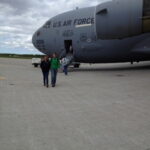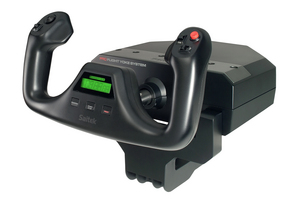Flying is one of today’s main forms of transportation. People use planes to fly for business, entertainment, and leisure. Air travel is relied on by thousands of people on a daily basis to get from one place to another. Without it, we would be limited to the places we could go, and very few people would ever have the opportunity to go to other countries. So for these reasons and many more, the math behind how these planes fly is very important to all of the world, whether they realize it or not.
Daniel Bernoulli was born into a family of mathematicians, therefore being destined to be one himself. He was born in the Netherlands in the early 1700’s. Bernoulli began college at the age of 13 at Basel University and completed his doctorate there in medicine. Upon graduation, he moved to Venice to study mathematics. He went on to publish several mathematical writings, which won him awards such as the Paris Academy Award. Bernoulli became one of the world’s most well-known mathematician, infamous for deriving the Bernoulli’s Equation.
The Bernoulli’s Equation is most known for its application to how airplanes fly. The first Law of Thermodynamics is often expressed as below.
Potential Energy + Kinetic Energy = Constant
PE + ½ mV2 = K
Bernoulli’s equation is a case of this equation. In the case of a fluid or gas, static pressure is used to represent potential energy. The kinetic energy is a function of air motion and its density. Bernoulli’s equation is usually stated “Static Pressure plus Dynamic Pressure is Constant”. Thus one form of the Bernoulli’s equation is:
Ps + ½ pV2 = K
The equation basically tells us that, as the flow of a fluid moves from one point to another, an increase in speed will be accompanied by a decrease in pressure. There are several forms of this equation.
Now exactly what does that mean and how does it apply to airplanes? In simplest terms, Bernoulli’s equation says that as the velocity of a fluid increases, its pressure decreases. Airplane wings are designed so that the top of the wing is curved and the bottom of the wing is flat causing the air to flow faster over the top of the wing than the bottom. The faster air flow reduces air pressure above the wing, causing the wing to lift. This is the basic idea of the Bernoulli Effect.
Bernoulli’s equation is only applicable if the following four restrictions are true.
1. Flow is steady
2. Density is constant
3. Friction losses are negligible
4. The equation relates the states at two points along a single streamline, (not conditions on two different streamlines)
However, all of these conditions are impossible to satisfy all at once. Fortunately, if the conditions are approximately satisfied the equation still works well.
In a steady flow, since the velocity at a point doesn’t change in time, the trajectory of every particle follows the same path. The direction of the velocity is tangent to the trajectory or streamline, but its size can change with position. Streamlines also can not cross because the flow can not go in two directions at the same time. The phase portrait might look something like this.
Let’s look at one of the simplest derivations of this equation. Start with the law of conservation of energy. This says if you take the sum of the kinetic and potential energies of a mass at a specific place, that is equal to the sum of the kinetic and potential energies at a new place, plus the work done on the mass between the two places. The equation looks like this.
KE1 + PE1 = W + KE2+PE2
But we’ll need to know the formulas for kinetic energy, potential energy, and work for this to mean anything. They are as follows:
KE = 1/2mv2
PE = mgh
W = Integral of F dx
Where m is mass, h is height, v is velocity, g is gravity, and F is the external net force on the mass. If we let the height be at zero and divide the equation by the V (volume of air) we get our new equation to be as follows.
MV21/2V = F dx + MV22/2V
Density is equal to m/V. The integral divided by the volume gives us the pressure at the second place subtracted from the pressure at the first. Our equation now becomes
P1 + V21r/2 = P2 + V22r/2
This is one of the forms of Bernoulli’s Equation.







